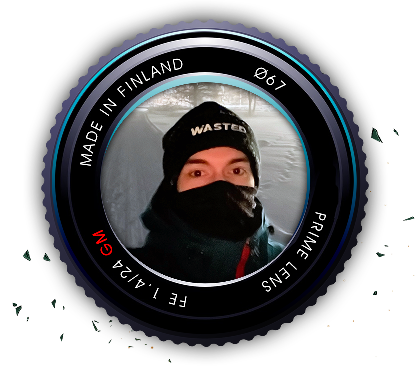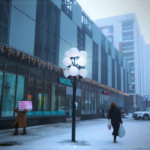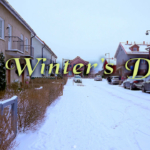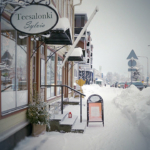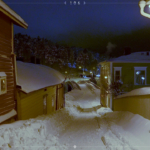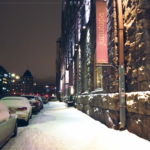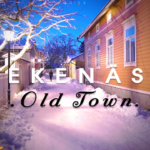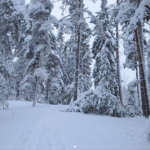Vantaa, Finland ✨ Crystal Clear Night Walk Downtown
4K UHD
Welcome to another scene, dear viewer.
Tonight you can accompany me in the recently developed city center and subway of Kivistö.
A district of the municipality of Vantaa, Finland.
We start our walk quite late, it is around 11.30 PM.
It is also freezing cold with temperatures well below zero, -11°C to be exact.
What is District Heating in Finland? Before we get into that, i want to share a brief historical overview of Kivistö.
Earliest evidence of settlement dates back to the early 16th century.
‘Kivistö’ translates to Rock Formations, a reference to the exposed granite bedrock common to the area.
The first housing area was built in the 1950s. However, being unaware of a nearby (long-distance) radio station.
Due to radio frequency interference, electrical infrastructure was banned.
This meant that the area spent its first years without electricity.
The village would become known as the ‘Oil Lamp Village’.
A total of 3 years of protests and complaints until the ban on electricity was lifted.
A new master plan approved in 2006 would include a subway, a shopping center, apartments and residential areas.
The plan is to bring about 27,000 residents and 26,000 jobs in the area.
However, in recent events, the plan to build a shopping center was canceled due to insufficient investors due to the corona crisis.
House prices depend on size, the most compact apartment of 20 m² is for sale for €138,000 while the largest spaces ranging from 180 / 250 m² are for sale for a whopping €750,000.
Which eventually brings us to District Heating.
What is district heating and why is it the most popular option in Finland?
In Finland district heating accounts for about 50% of the total heating market.
Over 90% of apartment blocks, more than half of all houses and the bulk of public buildings are connected to a district heating network.
There are power plants located in every region.
The thermal energy produced at these plants is transmitted to customers as hot water in a closed network consisting of two pipes (supply and return pipes).
The water circulating in the supply pipes entering the house releases its heat to customers via heat exchangers.
While the return pipe conveys the water back to the production plant for reheating.
Heating pipes are laid underground, usually at a depth of 0.5 to 1 meter.
It’s environmentally friendly as heat is produced at the same time as electricity generates in the power plants.
It’s affordable because the waste burning is a domestic fuel, wood, coal, natural gas, peat or oil.
It’s secure and the availability is 99.98%.
The lifetime of the pipes is long, up to 100 years.
More than 15,000 km of district heating networks in Finland since 2015.
Each year the network increases by 250-500 km.
New production methods are becoming interesting. Such as solar heat or geothermal heat obtained deep from the Earth’s crust.
Thank you, i hope it was interesting to read, enjoy the rest of the walk.
Together we learn, explore and walk through the scenes. 👋
Scott Buckley
Helios
https://scottbuckley.com.au
Attribution 4.0 International (CC BY 4.0)
